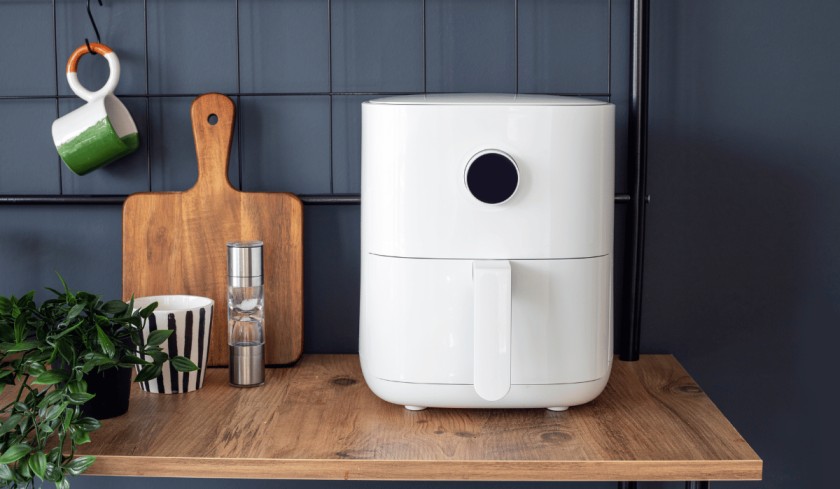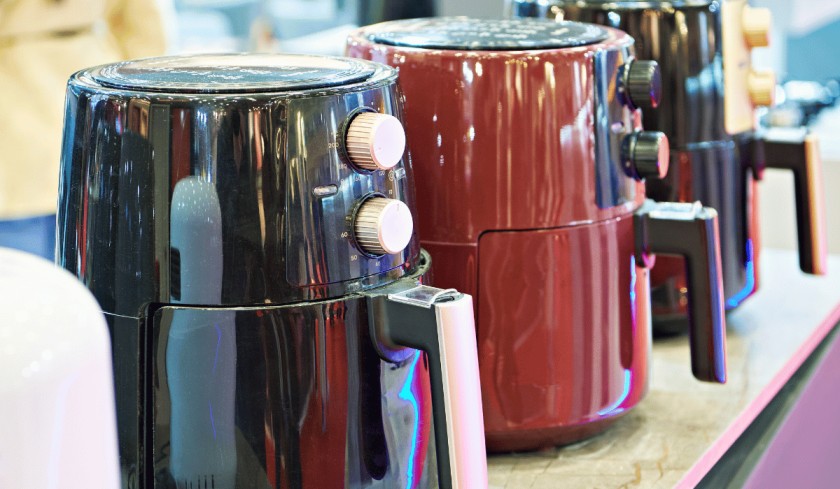Fried Foods: Fries, chicken wings, and onion rings can be made with less oil while still achieving a satisfying crunch.
Roasting: Vegetables can be roasted quickly, enhancing their natural flavors.
Baking: Items like muffins, cookies, and even small cakes can be baked in an air fryer.
Reheating: It’s also great for reheating leftovers, as it helps retain moisture and prevents sogginess.
Air Fryer: Uses convection cooking, where a heating element and a powerful fan circulate hot air rapidly around the food. This creates a crispy outer layer, mimicking the texture of fried foods with little or no oil.
Oven: Typically uses either conventional heating (where heat comes from elements at the top and bottom) or convection (where a fan circulates hot air, similar to an air fryer). Ovens are generally less intense in airflow compared to air fryers.
Air Fryer: Cooks food faster due to the high-speed air circulation, often reducing cooking times by 20-30% compared to traditional ovens.
Oven: Generally takes longer to preheat and cook food, especially for larger items or dishes that require more space.
Air Fryer: Usually smaller and more compact, making them ideal for countertop use. They are suited for cooking smaller batches of food, which can be a limitation for larger families or gatherings.
Oven: Typically has a larger cooking capacity, allowing for multiple dishes or larger items to be cooked simultaneously, such as casseroles or roasts.
Air Fryer: Produces a crispier texture on foods, similar to frying, which is desirable for certain items like fries and chicken wings.
Oven: While convection ovens can also create a crispy exterior, traditional baking in an oven may not achieve the same level of crispiness without using more oil or specialized techniques.
Air Fryer: Best for frying, roasting, and reheating, and can also bake small items. However, they might not be as effective for large roasts or baking large cakes.
Oven: More versatile for a wide range of cooking methods, including baking, roasting, broiling, and dehydrating. They can handle a variety of dishes and sizes.
Air Fryer: Generally uses less energy because it cooks faster and doesn’t require preheating as long as an oven.
Oven: May use more energy, especially if it’s a conventional oven that needs to preheat and cook for longer periods.
Air Fryer: Often easier to clean, as many models have removable, dishwasher-safe parts.
Oven: Can require more effort to clean, especially if spills or splatters occur during cooking.
Healthier Cooking: Air fryers use significantly less oil compared to traditional frying methods, making fried foods lower in calories and fat.
Crispy Texture: They produce a crispy exterior on foods, mimicking the texture of deep-fried items without the added grease.
Quick Cooking Times: Air fryers generally cook food faster than conventional ovens due to rapid air circulation, making them convenient for busy schedules.
Versatility: They can be used to cook a variety of foods, including vegetables, meats, baked goods, and frozen snacks, expanding your cooking options.
Easy Cleanup: Most air fryers have dishwasher-safe parts, making cleanup quick and easy compared to traditional frying methods.
Compact Size: Air fryers are typically smaller than conventional ovens, making them suitable for kitchens with limited counter space.
Less Odor and Mess: Cooking with an air fryer usually results in less odor and splattering, keeping the kitchen cleaner.
Limited Capacity: Air fryers often have smaller cooking capacities, which may require cooking in batches for larger families or gatherings.
Texture Differences: While they create a crispy exterior, the texture may not be identical to deep-fried foods, which some users may find less satisfying.
Learning Curve: Adapting recipes designed for traditional frying can require experimentation, as cooking times and temperatures may vary.
Price: High-quality air fryers can be relatively expensive compared to other cooking appliances, which may be a consideration for budget-conscious consumers.
Noise Level: Some air fryers can be noisy due to the fan operation, which might be bothersome in quiet environments.
Space Considerations: While they are compact, air fryers can still take up valuable counter space, especially in smaller kitchens.
Durability: Some users report that air fryers may have a shorter lifespan compared to traditional ovens or other kitchen appliances.



